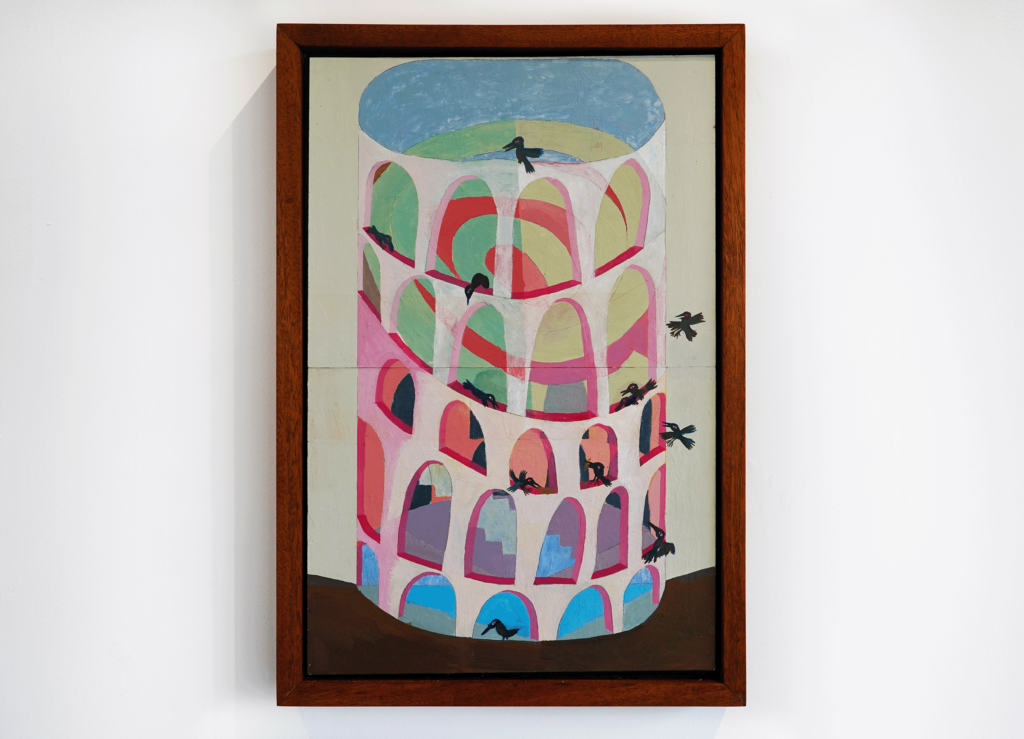
Tower, 2024 (ink and emulsion on panel, hardwood frame)
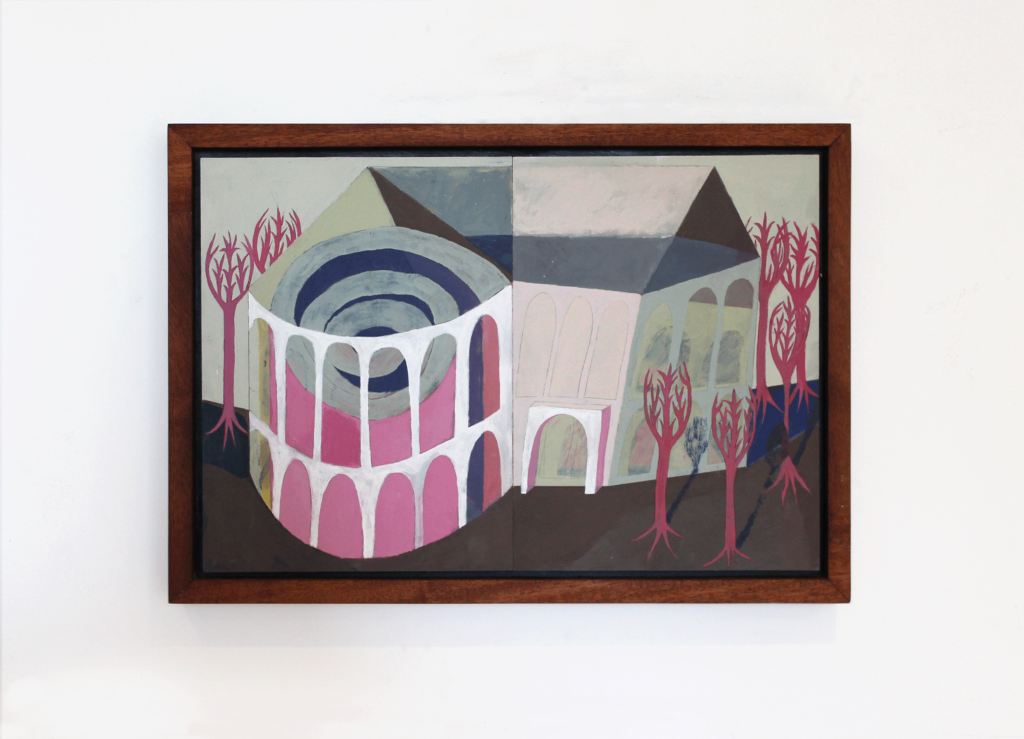
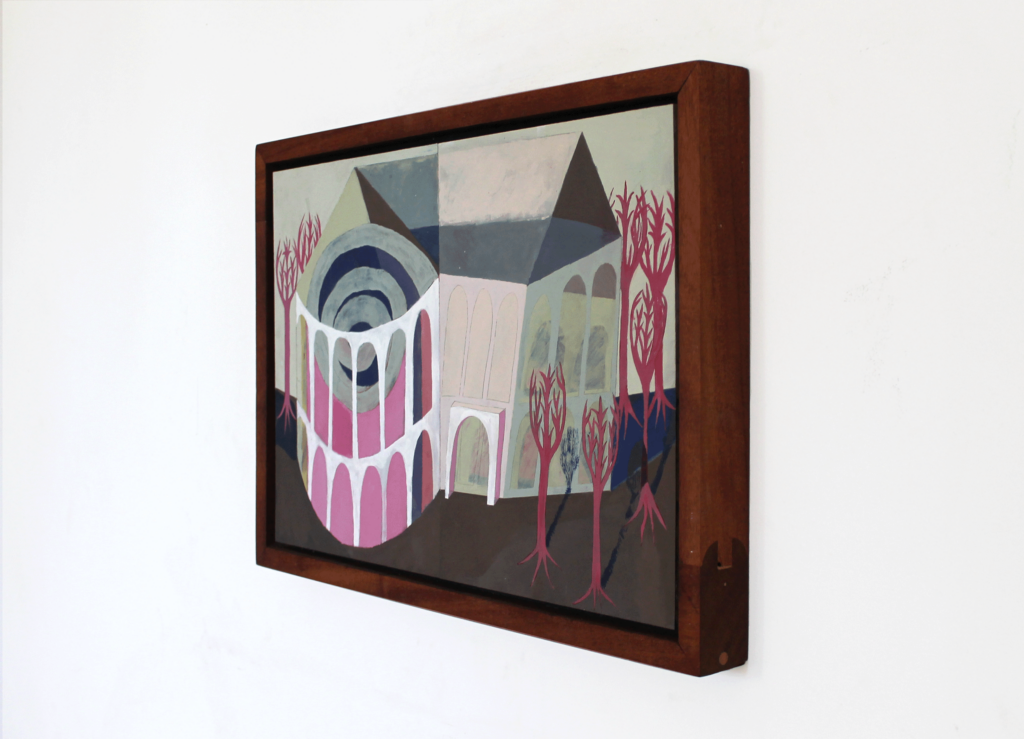
Cathedral, 2024 (ink and emulsion on panel, hardwood frame)
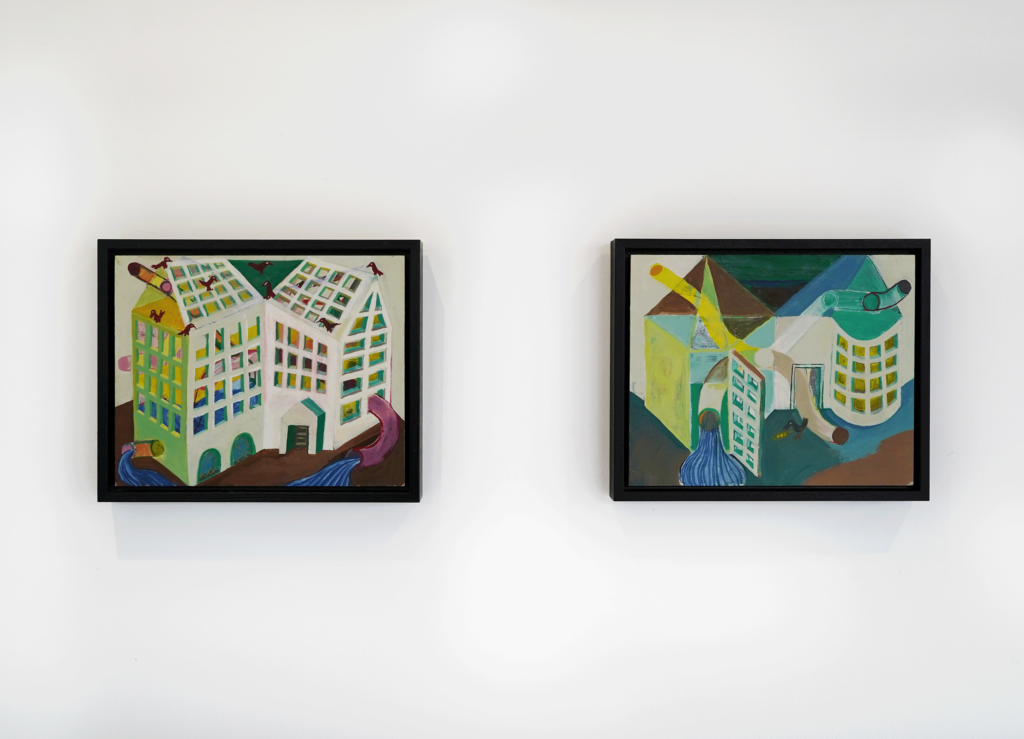
Dads House – Glasshouse 1, 2024 (ink and emulsion on panel, ayous wood frame)
Dads House – Glasshouse 2, 2024 (ink and emulsion on panel, ayous wood frame)
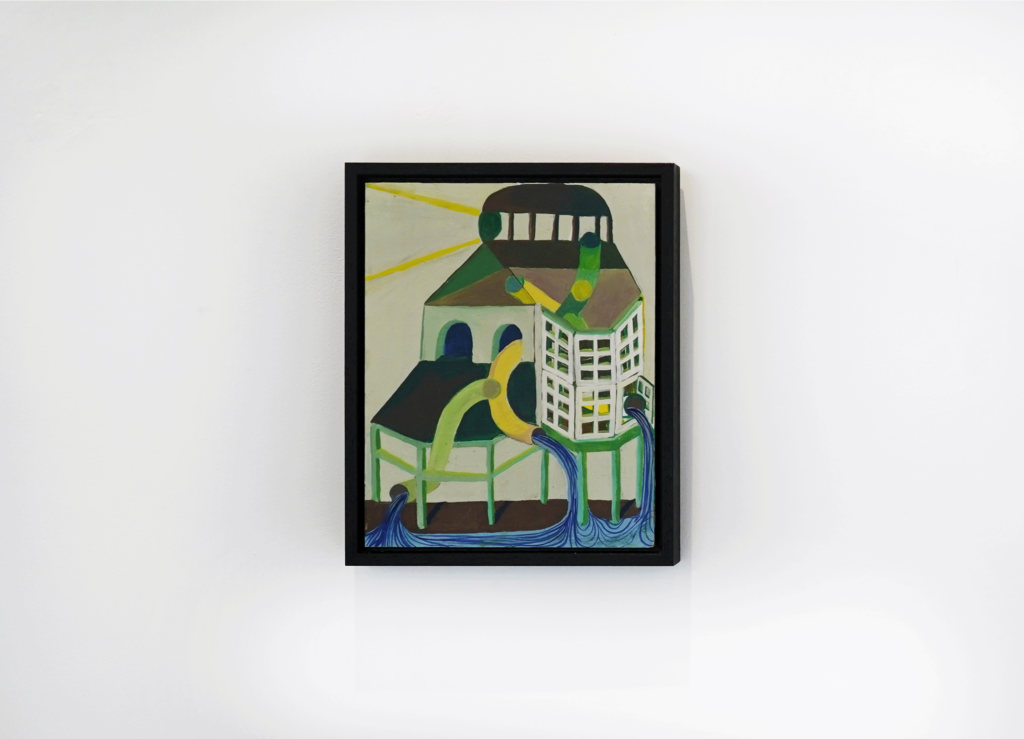
Lighthouse, 2024 (ink and emulsion on panel, ayous wood frame)
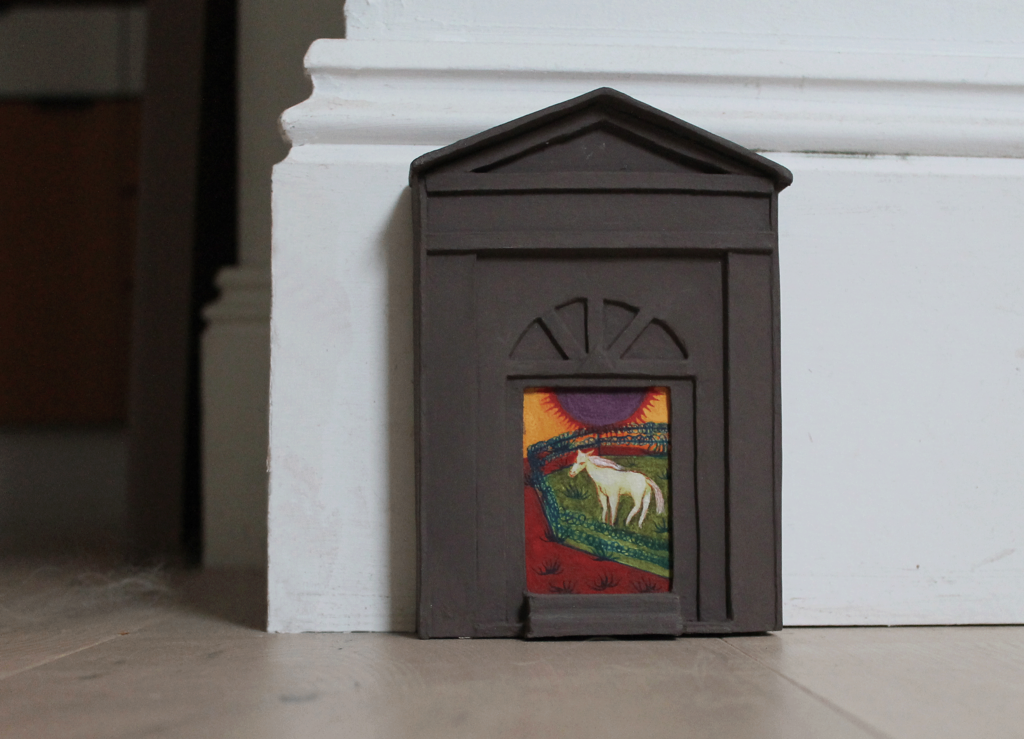
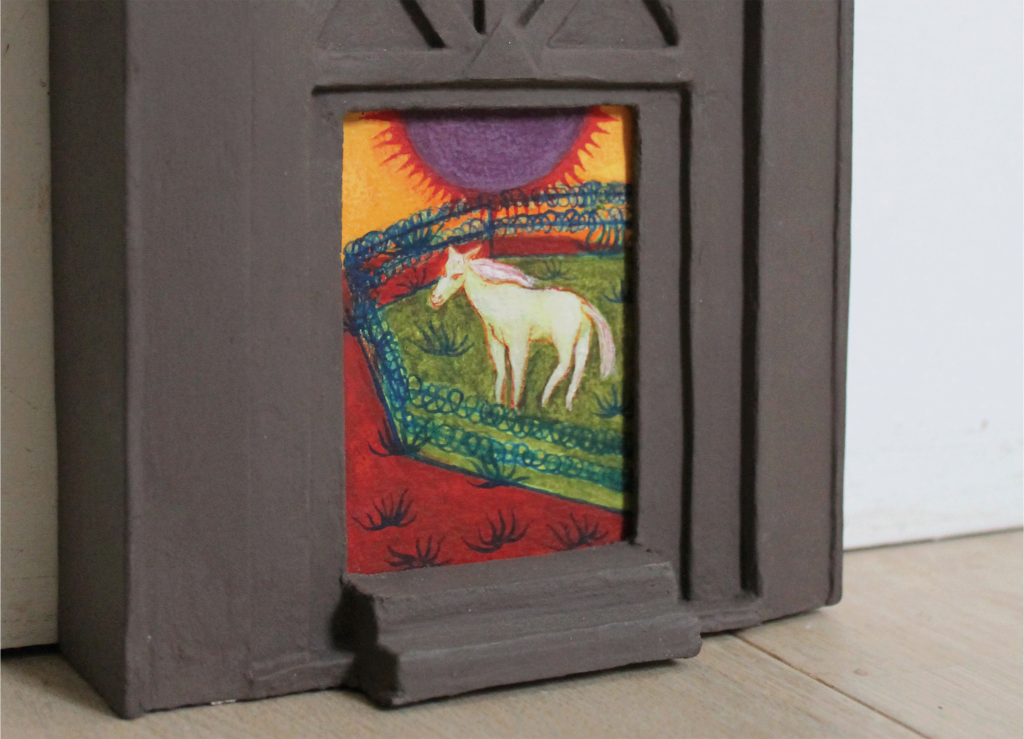
Untitled, 2023 (card, emulsion, glue, gouache)
Dads House
Dads house takes on many different forms but is always the same place. It is a dream house, a collage of aspirations, imagined events, passages of books, and real memories.
In Carmen Maria Machado’s memoir In the Dream House, which details her tumultuous relationship and abusive treatment from an ex-girlfriend, she uses the allegory of a house to compartmentalise her experiences, ‘open doors’ to memories to unpick them, ‘shut doors’ to memories she’s not quite ready to explore.
These works use the domestic space in a similar way – as a tool to make sense of my own abstract or confused ideas about my identity.
Dads House is also an interrogation of how architecture shapes culture, and in turn shapes people. This current body of work follows on from observing my Dad’s obsession with Georgian buildings: how he as a carpenter and builder is often working in these places, adding to them or taking away from them.
It is also inspired by both of my parents’ aspirations for a home to be proud of, a home that is theirs, a home to come back to. From my experience, identity in this country is strongly related to an individual’s perception of their class, and class is primarily expressed through property and ownership (resources or lack there-of).
The two larger paintings are framed using offcuts of an old solid wood door. The pieces that were selected to make the frames feature details of the joinery methods used to make the original door, with the intention to highlight the craftsmanship involved in making an everyday object of use.
The tiny paintings illustrate a small piece of a text based on a dream. They are framed using a model of a traditional door. Framing the paintings through a doorway touches on this notion of the compartmentalisation of aspects of the self. They are placed to make you notice the seams of the room and the details in it that you don’t always recognise, reconnecting the viewer with the craftsman who built the room.